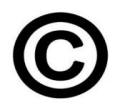Newsletter Issue 54 - August 2013
In this issue:
Fair use and Dr. Martin Luther King
Copyright protection for photos
Patent 'on sale' bar
Ask Dr. Copyright ...
Dear Doc:
This past week was the 50th anniversary of the March on Washington,
where Dr. Martin Luther King, Jr. delivered his famous "I Have a
Dream" speech. I wanted to show my kids the entire speech (not just
the end part that you see for about 15 seconds on the news) so that
they could write about it in their history classes, and when I
searched for it on the Internet, I found a notice on YouTube stating
that the video of the speech was blocked on copyright grounds.
I thought that there was something called "fair use" that would
allow non-commercial educational use of things like this. What
gives?
Signed,
Still Dreaming
Dear Dreaming:
Dream on!
The video of the "I Have a Dream" speech is copyrighted, and is
owned by Sony Music Publishing, the Estate of Michael Jackson,
Jynwel Capital of Hong Kong, the Blackstone Group, David Geffen, and
the Mubadala Development Company, which is the government of Abu
Dhabi's investment arm, and that copyright lasts until 2038.
EMI Music Publishing, which manages the copyright for those owners
charges $20 for a DVD of the speech for noncommercial use, and
reportedly charges thousands of dollars each time the speech is
broadcast for more than a few seconds. They sue people who refuse to
pay, and the Doc has been unable to find any provision for free use
of the speech in classrooms.
This is a big year for copyright, in case you did not know. It's
been 35 years since the 1976 revision of the Copyright Law, and
under that law, authors and artists may now file to reclaim their
copyrights. Many have done so, but most have not because it's not
worth their time and money to do so. Also, works created before
1952, which would have gone into the public domain but for the 1976
law, are now locked up until 2052.
SO...copyright continues to be a hot topic for the Doc, and it seems
he will have a job writing this column for a long time to come.
Welcome to the future.
By the way, you're not a very persistent Internet searcher! Here's
the full "I Have a Dream Speech":
http://youtu.be/fIshI_qxxew
Have a copyright (or any other intellectual property law) question?
Ask the attorneys at LW&H. They eat, sleep and drink this stuff (in
addition to good cognac, on occasion.)
Until next month...
The Doc
Loosely Organize those Loose Photos then Seek Copyright
Protection ...
Imagine how surprised some photographers are when we tell them
that the government fee for registering the copyrights of a complete
photo shoot -- comprising hundreds of photographs --- is only $35.00
if you do it online. It seems like nothing the government charges
these days is only $35.00! It represents one of the best bargains
available for protecting intellectual property. Registration gives
photographers and other authors of original content access to
federal courts, a presumption of validity, a public record of
ownership and customs protection.
So, how do you record hundreds of unpublished works (i.e., each
photo) in one single registration? To do that, the registration must
qualify as a "collection." The Code of Federal Regulations (37
C.F.R. Sec. 202.3(b)(4)) provides the rules:
(4) Registration as a single work. (i) For
the purpose of registration on a single application and upon payment
of a single registration fee, the following shall be considered a
single work:
....
(B) In the case of unpublished works: all copyrightable elements
that are otherwise recognizable as self-contained works, and are
combined in a single unpublished "collection." For these purposes, a
combination of such elements shall be considered a "collection" if:
(1) The elements are assembled in an orderly form;
(2) The combined elements bear a single title identifying the
collection as a whole;
(3) The copyright claimant in all of the elements, and in the
collection as a whole, is the same; and
(4) All of the elements are by the same author, or, if they are by
different authors, at least one of the authors has contributed
copyrightable authorship to each element.
Registration of an unpublished "collection" extends to each
copyrightable element in the collection and to the authorship, if
any, involved in selecting and assembling the collection.
A photo shoot usually meets the above requirements. It can bear a single title, e.g., "Photo Shoot August 30, 2013"; the claimant is the same for all the images, i.e., the photographer or, perhaps, the photographer's employer; and all the elements are by the same author, i.e., the photographer. But what about the first requirement that all the elements be "assembled in an orderly form"? Usually, numbering the images from one to whatever is deemed to be sufficient. Recently, the U.S. Court of Appeals for the Seventh Circuit considered this question in Quincy Neri v. Melinda Monroe, No. 12-3204, (August 12, 2013, Cir. 7th).
In Neri, a defendant renovation company posted photographs of a
completed architectural renovation on various Internet sites. The
photos included, without permission, images of the plaintiff's
sculpture. This bought them a lawsuit by Neri for copyright
infringement.
The magistrate dismissed the lawsuit because Neri had not registered
her copyright in the sculpture --- yes, registration is important
but it must be done correctly! Neri had registered her copyright by
submitting to the Copyright Office an application together with a
collection of photographs consisting of a bound booklet and some
loose photographs of her unpublished works, the latter of which
contained a picture of the sculpture. The Magistrate judge, though,
concluded that the application and resulting certificate were
invalid because her submission was not in an "orderly form." The
magistrate judge believed only a single bound book or booklet could
meet the "orderly" requirement but not the loose photographs.
The Court Appeals wrote that it failed to see why only a single
document can be orderly and why a court should set aside "an
agency's application of its own regulations without a strong
reason." But just how much order is required? No other court had
addressed the question and the Court of Appeals was on its own. The
court wrote that the key question is "whether the submission [to the
Copyright Office] is organized well enough to permit users and the
court to pin down the "information" on which copyright enforcement
depends. The Court went on to hold that this "implies that loose
photographs could suffice if numbered or labeled..." Merely because
Neri may have submitted loose photographs in support of her
copyright registration was not a de facto reason to reject the
registration. Neither the copyright office nor the Court Appeals
concluded that Neri's submission was invalid.
So, photographers out there, you can submit your loose photographs
to the Copyright Office but just make sure they are numbered or
labeled for identification purposes.
Beware of the On-Sale Bar
If you are a regular reader of this newsletter, then you know
that a sale or offer for sale of your invention will terminate your
patent rights unless you first file a patent application. Did you
know that the on-sale bar also applies to commercial sales of the
invention to you, as from a contract manufacturer or
prototype-maker?
Hamilton Beach recently learned to its sorrow that the on-sale bar
applies not only to sales by the patent owner but also to purchases
by the patent owner. Hamilton Beach invented an improved slow
cooker. Hamilton Beach did not manufacture the slow cooker itself
and instead negotiated with a foreign manufacturer. The foreign
manufacturer offered to sell the improved slow cooker to Hamilton
Beach. Hamilton Beach subsequently filed an application and obtained
a patent for the improved slow cooker. Hamilton Beach later sued
Sunbeam for patent infringement. Sunbeam argued that the Hamilton
Beach patent was invalid because of the offer to sell the invention
by the manufacturer to Hamilton Beach.
The
U.S. Circuit Court for the Federal Circuit ruled that the offer
by the manufacturer to sell the slow cookers to Hamilton Beach was
an 'offer of sale' that tripped the 'on sale' bar and invalidated
the patent.
Why is this decision important to small businesses and individual
inventors?
The hidden risk of the Hamilton Beach decision lies in the
production of prototypes. The on-sale bar requires (a) a commercial
sale or offer for sale of (b) an invention that is ready for
patenting. An estimate from, say, a machine shop to produce a
prototype of an invention could be a commercial offer to sell the
invention triggering the on-sale bar if the invention is ready for
patenting. An invention is 'ready for patenting' when (a) the
inventor has a working prototype or (b) the invention is described
in drawings or in written descriptions sufficient to allow a
knowledgeable person to build and use the invention.
The only way sure way to avoid the on-sale bar is to not buy or sell
the invention until after you file a patent application. The
Hamilton Beach case is yet another reason to file provisional patent
applications early and often.
Back to top.

